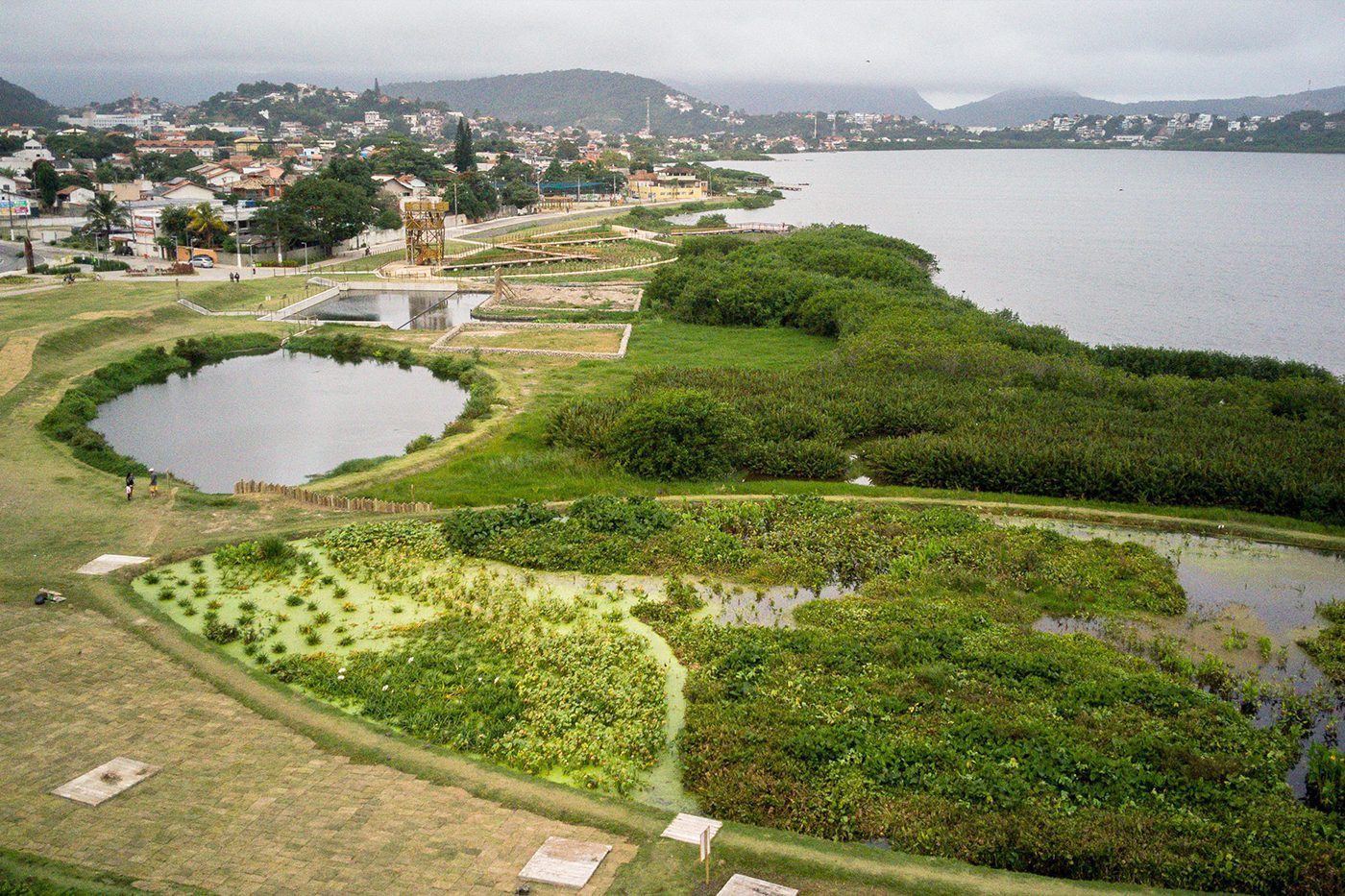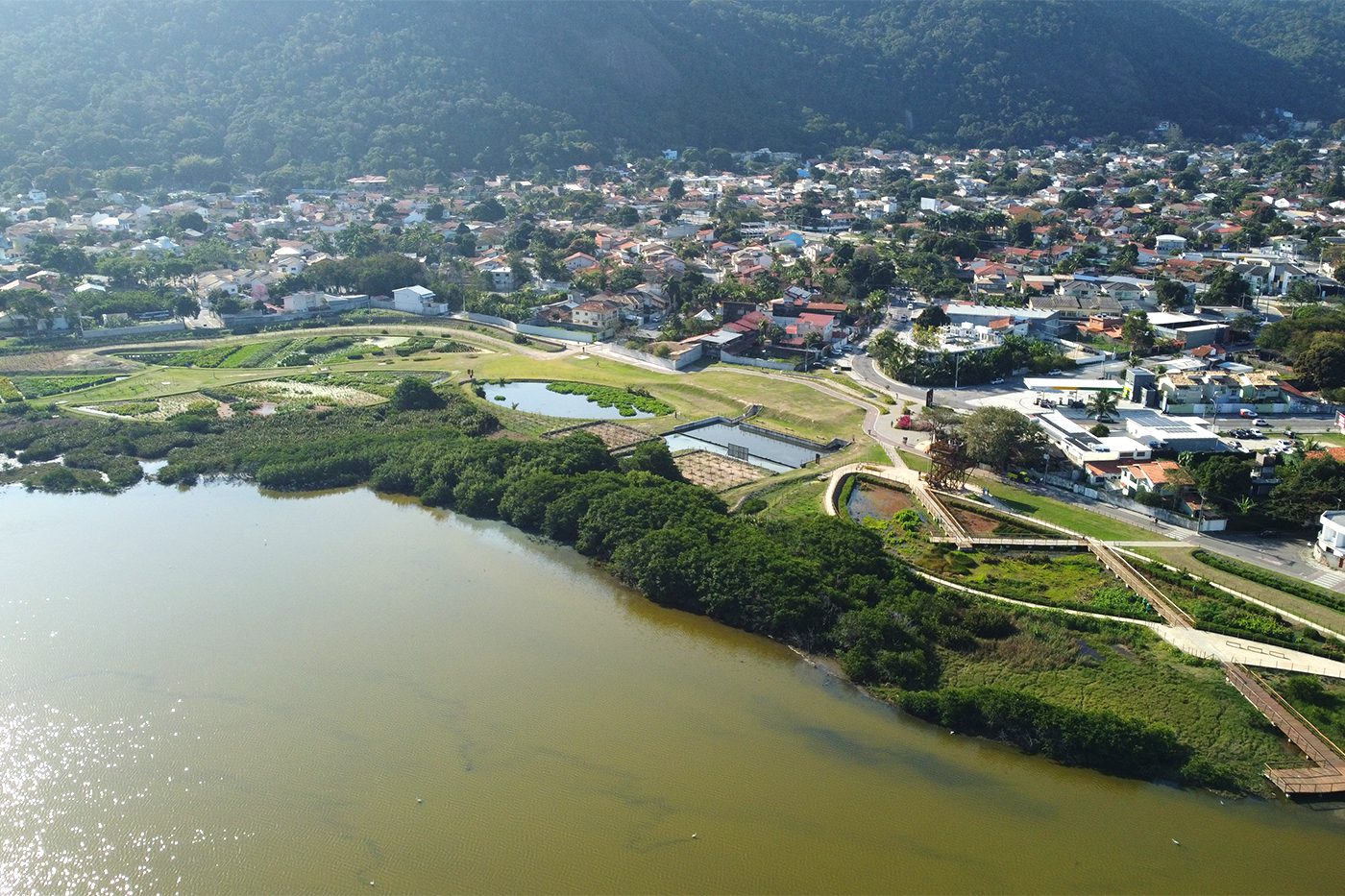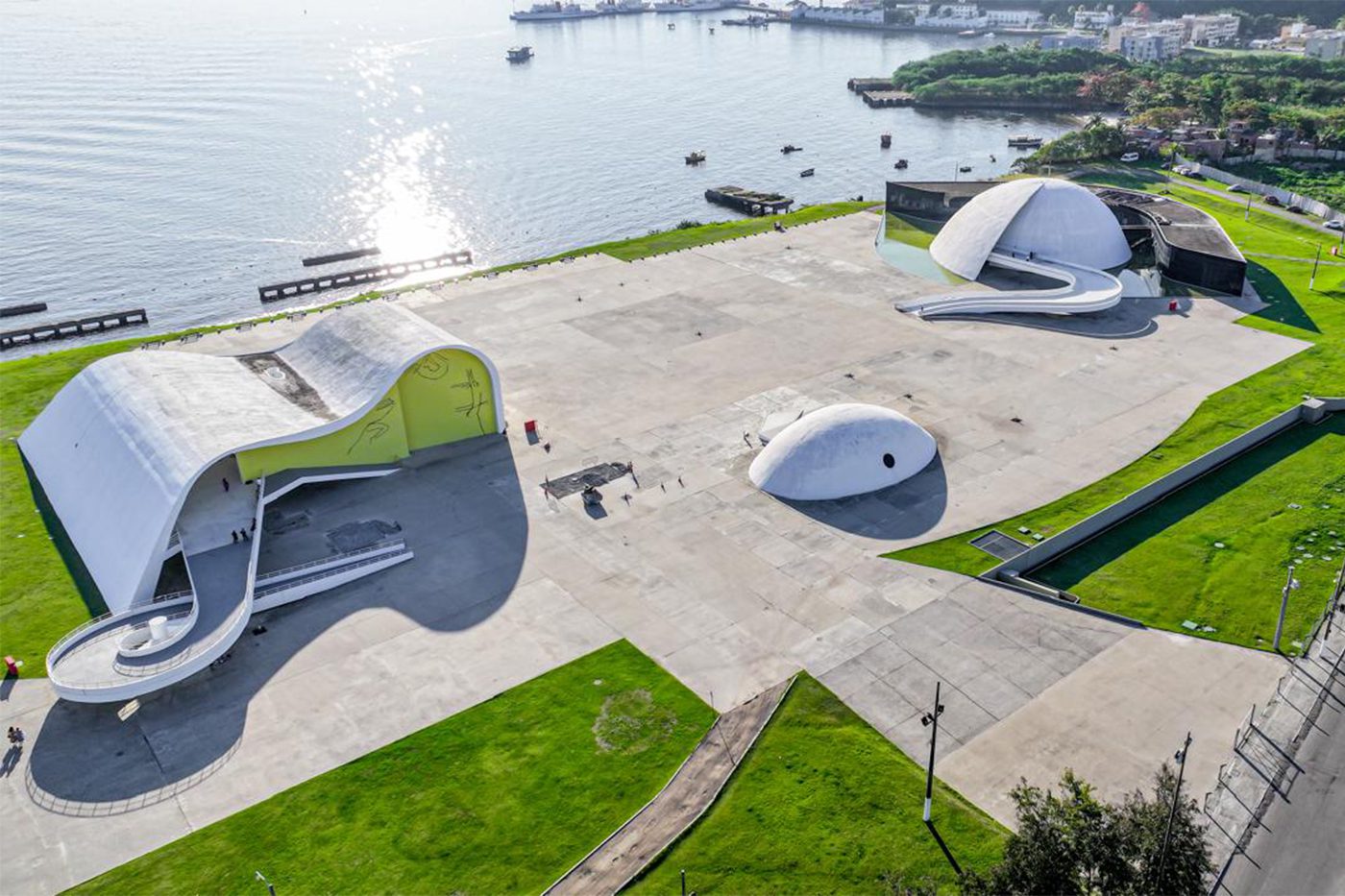Piratininga Waterfront Park (POP) represents a milestone in urban planning and environmental management in Brazil, serving as both an urban public park and a living laboratory of sustainability. Its innovative design is based on the adoption of Nature-Based Solutions (NbS), a strategy that combines green infrastructure with ecological restoration to aid in the recovery of Piratininga Lagoon.
To this end, three large constructed wetland systems were implemented, capable of naturally filtering water from the urban basins of the Cafubá River, the Arrozal River, and the Jacaré River. These systems occupy an area of approximately 35,000 m² spread over two linear kilometers along the lagoon. They treat water from the main contributing rivers, as well as surface runoff and drainage from neighborhoods, reducing the input of sediment and pollutants into the water body and promoting the gradual recovery of the lagoon's environmental quality.
Associated with this solution, there is also the restoration of Atlantic Forest connectors in surrounding wetlands, which reinforce ecological connectivity, expand habitats for local fauna, and strengthen ecosystem services provided to the population.
In addition to environmental restoration, the park was also designed as a space for social and cultural integration. The Ecocultural Center, a facility dedicated to environmental education and cultural activities, seeks to raise awareness of the importance of preservation.
The Park also includes cycle paths, piers for fishing and contemplation, leisure areas and sports centers, constituting a multifunctional infrastructure that promotes health, mobility, tourism and quality of life.
The POP's overall objective is ambitious: to restore environmental systems and rehabilitate the area surrounding Piratininga Lagoon, enhancing its scenic heritage and promoting urban sustainability. Its specific objectives include reversing the lagoon's environmental degradation; implementing NBS for water treatment; stimulating biodiversity and preserving native flora and fauna. More than just a public project, the POP is a concrete example of the potential for reconciling urban infrastructure, environmental restoration, and social inclusion. With its implementation, an area that was previously a source of socio-environmental exclusion has been transformed into a context for environmental justice. Its existence reinforces the need for integrated urban thinking, with a public management process based on systemic thinking, creating solutions that increase city resilience and offer direct benefits to the population. This project is a benchmark in innovation and socio-environmental justice, transforming a historically degraded space into a hub for ecological regeneration, community gathering, and cultural appreciation. Caminho Niemeyer was conceived as a cultural and landscape axis in the city of Niterói, including the Teatro Popular, the Museum of Contemporary Art, among others.
Free
Registration
Registrations must be made here.
Selection will be made in order of registration.
Registration will be open until the start of the activity, on site, as long as there are spaces available.




